
Soviet Union Administrative Divisions, 1981 Map, Imaginary maps
The history of the USSR on maps, from the eve of the First World War, until the fall of the USSR in 1991.This video is the third and last part on the history.
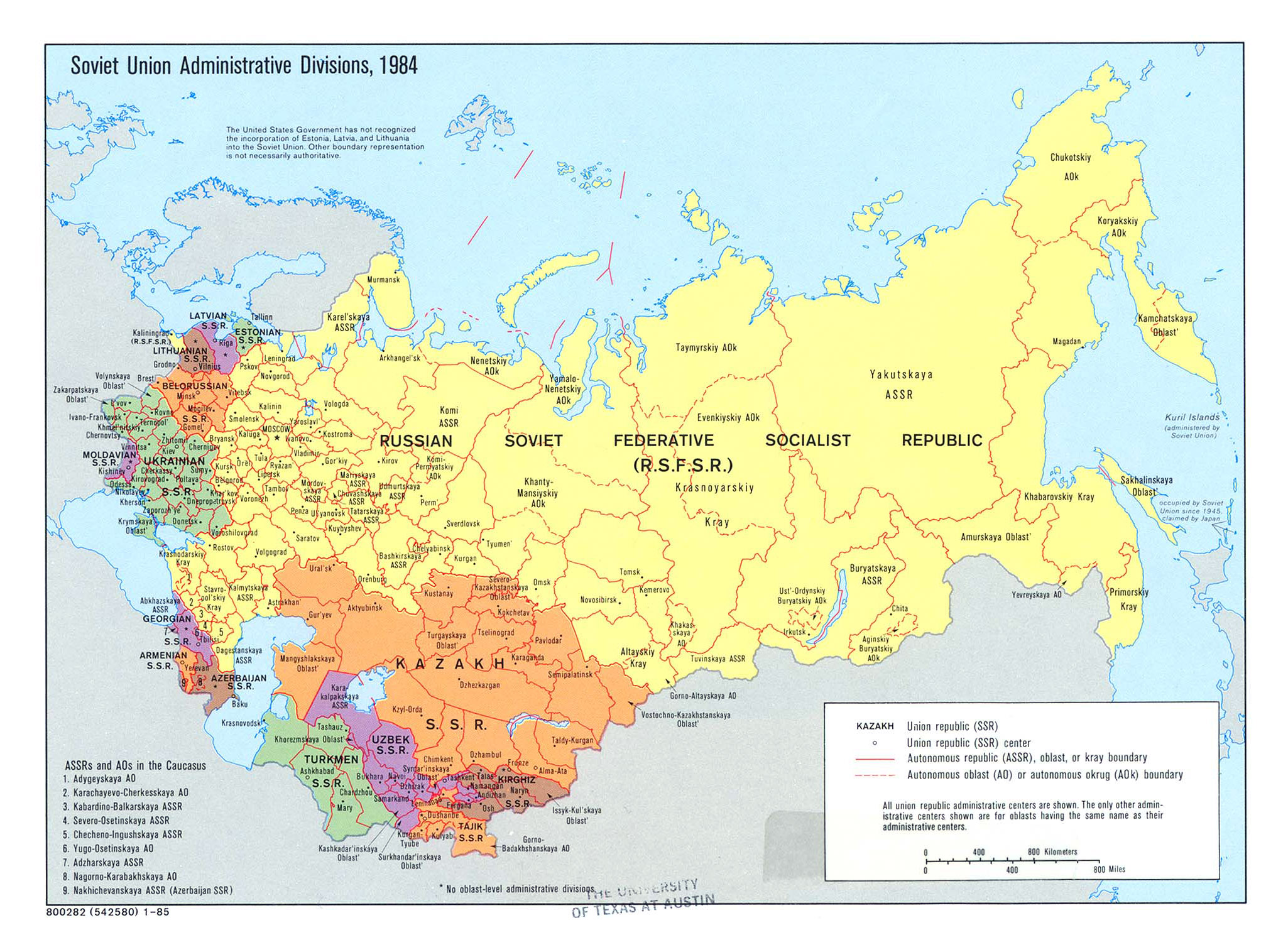
Large detailed administrative divisions map of the Soviet Union (U.S.S
When oil plunged from $120 a barrel in 1980 to $24 a barrel in March 1986, this vital lifeline to external capital dried up. The price of oil temporarily spiked in the wake of Iraq's invasion of Kuwait in August 1990, but by that point the collapse of the Soviet Union was well under way. The military factor
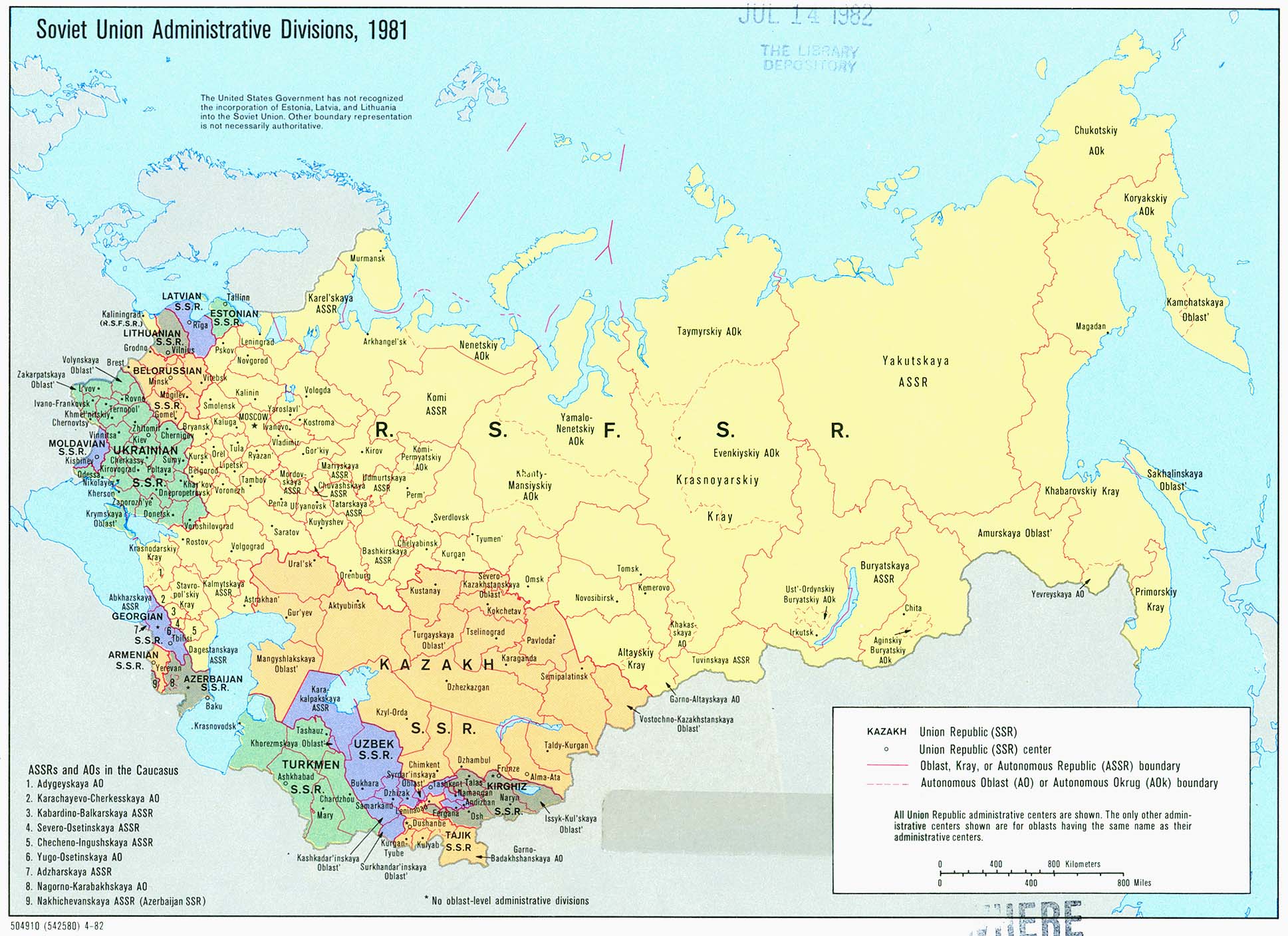
Russia and Post Soviet States Map World Regional Geography Spring
Former Soviet Union (USSR) Countries. The Soviet Union (or the Union of Soviet Socialist Republics - USSR) was a giant single-party communist state formed by the federal union of 15 national republics. It existed from 1922 to 1991. This giant transcontinental state stretched across Asia and Eastern Europe from the Pacific Ocean coast in the east to the Baltic and Black seas in the west.
Second World Problems A Soviet Timeline
Image: Respublika Narodnaya About the Soviet Union The map shows the Soviet Union, the former country, partly in eastern Europe and partly in northern Asia, was established in 1922 and dissolved in 1991. With an area of 22,402,200 km², it was the largest country on Earth.

Mundo en Contexto Ucrania; Zona del Kremlin o Zona Euro?
Soviet Union Countries Geography of the Soviet Union With the eastern part of Europe and the northern part of Asia, the USSR has become the world's largest country with a surface area of 22.402.400 km². At the same time, USSR ranked 3rd in the world with 293,047,571 million (June 1991) population. Map of Soviet Union

Russia’s Struggle for Power in Ukraine Fall 2014 Washington State
1980: Miracle on Ice: At the Winter Olympics, the American men's hockey team scored a very surprising victory against the Soviet team. The U.S. team went on the win the gold medal. 1980: Olympic Politics: The United States and 60 other countries boycott the Summer Olympics (held in Moscow) to protest the Soviet invasion of Afghanistan. 1982.

Former Soviet Union States Map
1 Storia 1.1 La rivoluzione di febbraio 1.2 La rivoluzione d'ottobre 1.3 Dalla fondazione alla morte di Stalin 1.3.1 La seconda guerra mondiale 1.3.2 Il dopoguerra 1.3.3 La guerra di Corea 1.4 Da Chruščёv a Brežnev 1.5 Perestrojka e glasnost' 1.6 Dissoluzione dell'Unione Sovietica 2 Politica 2.1 Politica interna 2.2 Politica estera

Detailed administrative map of the USSR Soviet union, Map, History
Eastern Europe, Series N501 (Topographic Maps) 1:250,000, U.S. Army Map Service, 1948-. This series includes much of Russia in Europe, all of Belarus, Latvia, Lithuania, Moldova and Georgia. Includes most of Armenia, Azerbaijan, Estonia and Ukraine. Includes parts of easten Poland and parts of northern and eastern Romania.

R. M. Chapin map of the Soviet Union Soviet union, Street map art
The Republics of the Union of Soviet Socialist Republics or the Union Republics (Russian: Сою́зные Респу́блики, tr. Soyúznye Respúbliki) were national-based administrative units of the Union of Soviet Socialist Republics (USSR). [1] The Soviet Union was formed in 1922 by a treaty between the Soviet republics of Byelorussia.

30 décembre 1922, naissance de l'URSS d'un impérialisme l'autre
Soviet Union (Union of Soviet Socialist Republics; U.S.S.R.), former northern Eurasian empire (1917/22-1991) stretching from the Baltic and Black seas to the Pacific Ocean and, in its final years, consisting of 15 Soviet Socialist Republics. The capital was Moscow, then and now the capital of Russia.
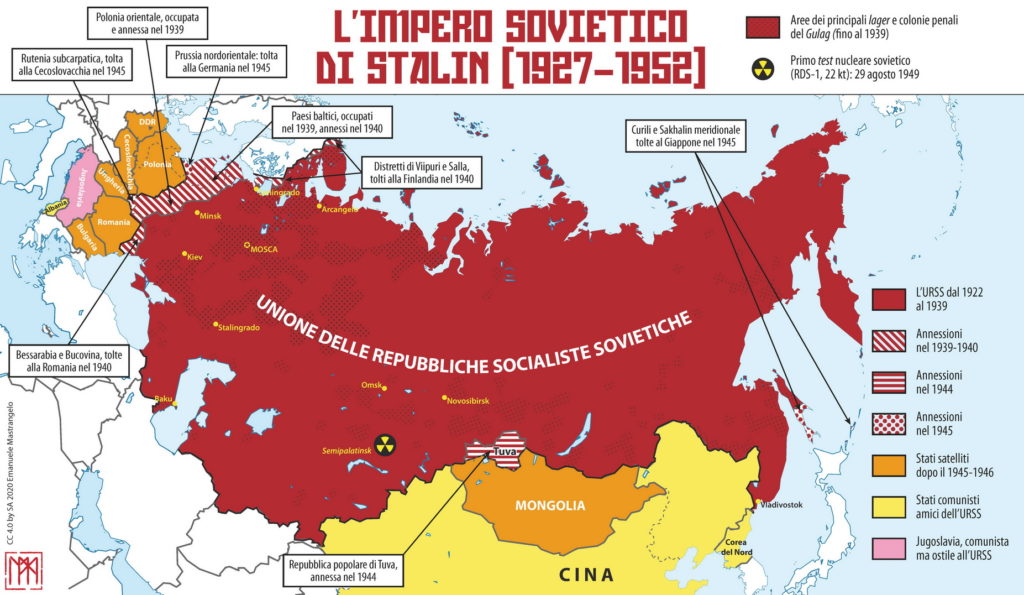
L'URSS di Stalin dal disastro allo zenit dell'Impero comunista
The history of the Soviet Union from 1982 through 1991 spans the period from the Soviet leader Leonid Brezhnev 's death until the dissolution of the Soviet Union. Due to the years of Soviet military buildup at the expense of domestic development, and complex systemic problems in the command economy, Soviet output stagnated.
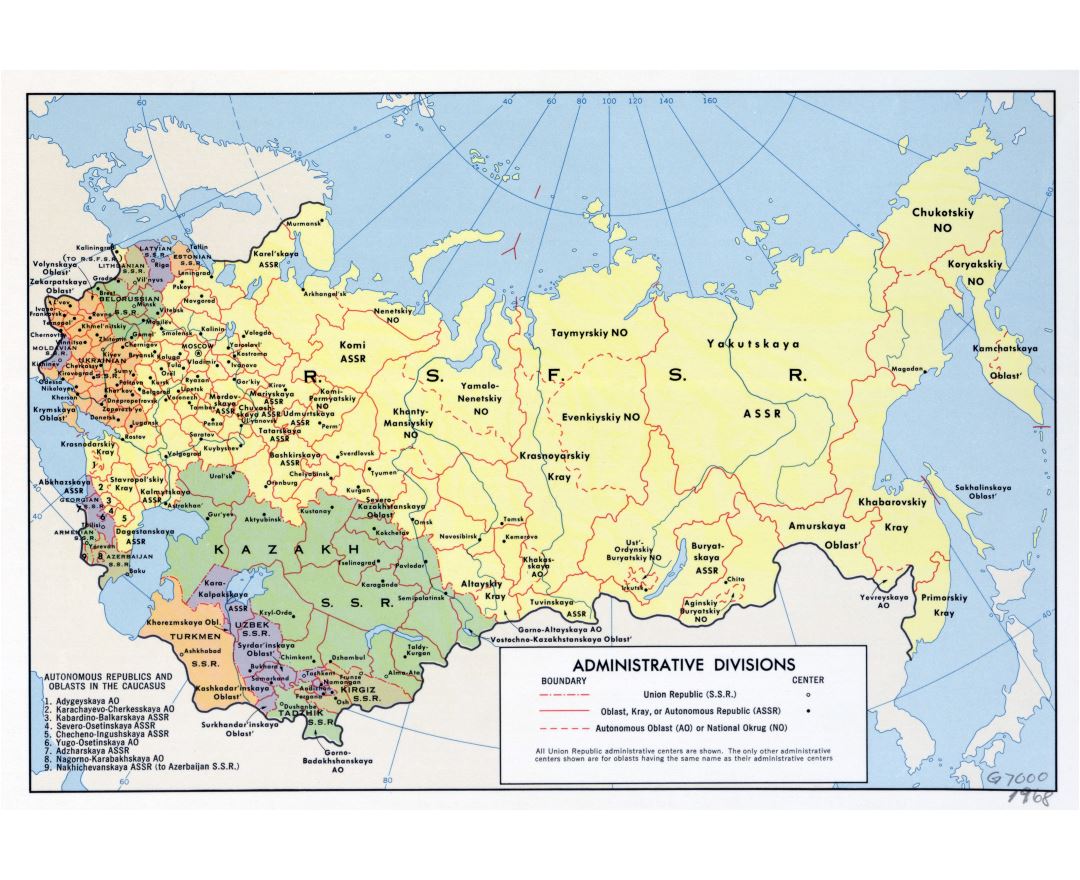
Maps of U.S.S.R. Collection of maps of Soviet Union Europe
1953 - Soviet Union explodes its first hydrogen bomb. 1955 - Nikolay Bulganin replaces Malenkov as prime minister. 1955 - Warsaw Treaty Organisation, or Warsaw Pact, set up. 1956 - Soviet troops.
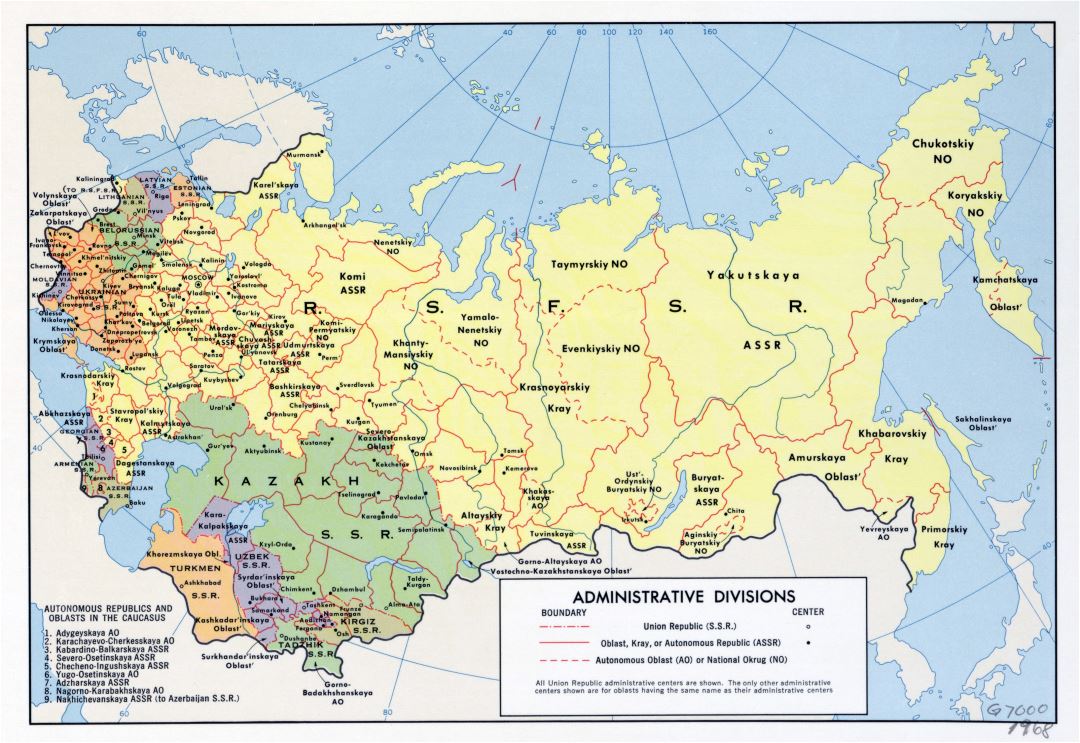
Large scale administrative divisions map of the USSR 1968 U.S.S.R
Here's what happened to the 15 republics in the decades after the USSR's disintegration. Russia. After the Soviet Union dissolved, its preeminent republic endured political dysfunction and.
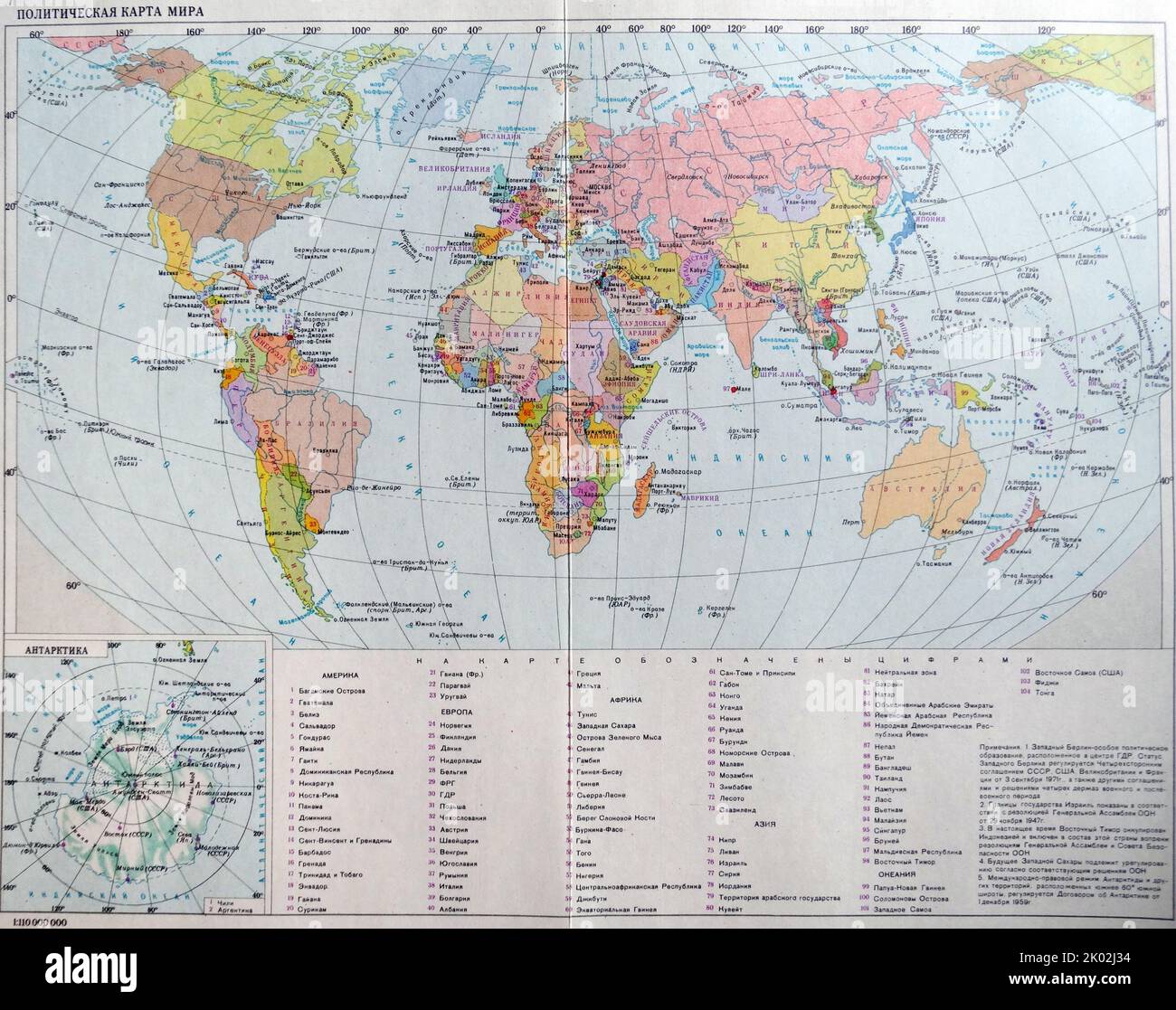
Ussr map 1980 immagini e fotografie stock ad alta risoluzione Alamy
World map with alliances in 1980, during the Cold War The factual accuracy of this map or the file name is disputed. Reason: Please see the relevant discussion on the talk page. Picture keys[edit] Summary[edit] Related images File:Cold War Map 1959.svg - 1959 Cold War map File history
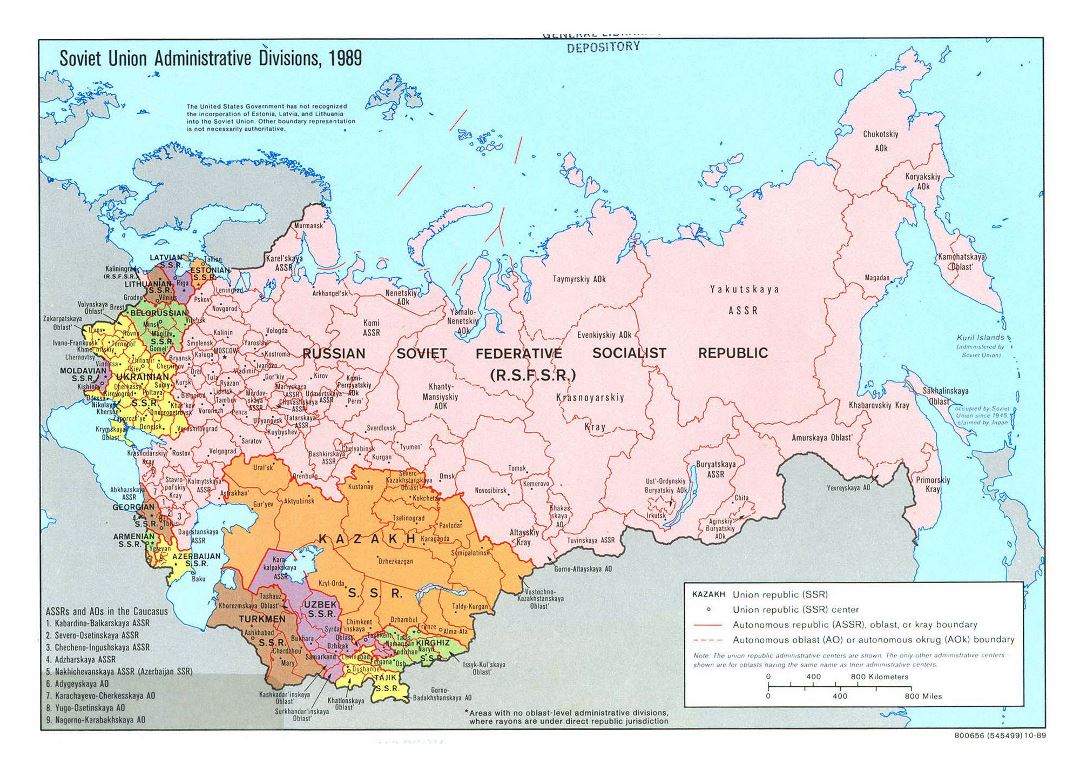
Large detailed administrative divisions map of the Soviet Union 1989
The Early Days of the Soviet Union The USSR was first born in 1922, in the aftermath of the fallen Russian Empire. A civil war between the Bolshevik Red Army and anti-Bolshevik forces across the region ended with the former coming out victorious. This resulted in the unification of a number of republics to form the Soviet Union.

Maps of Soviet Union
The Soviet-Afghan War was a protracted armed conflict fought in the Soviet-controlled Democratic Republic of Afghanistan (DRA) from 1979 to 1989. The war was a major conflict of the Cold War as it saw extensive fighting between the DRA, the Soviet Union and allied paramilitary groups against the Afghan mujahideen and their allied foreign fighters..